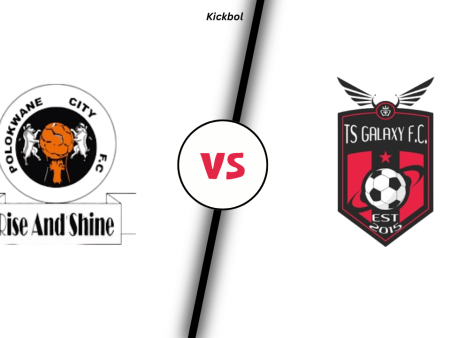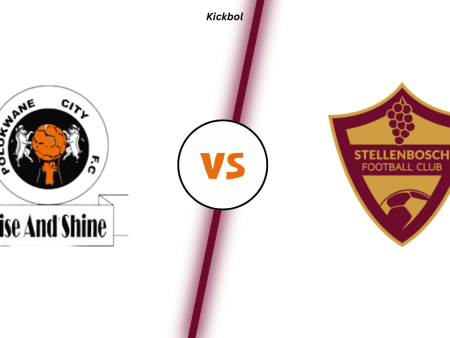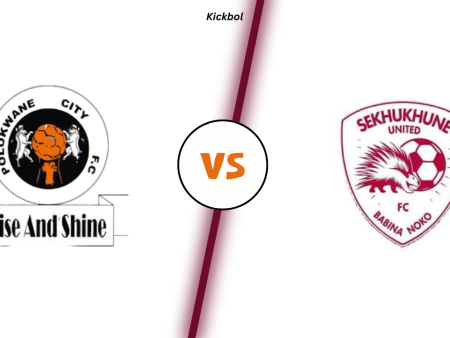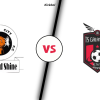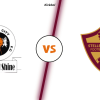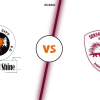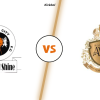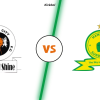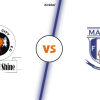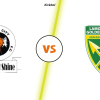Die 2. Bundesliga ist bekannt für seine leidenschaftlichen Derbys, und das Aufeinandertreffen zwischen dem FC St. Pauli und Holstein Kiel ist ein Spiel voller Geschichte, Lokalstolz und fesselndem Fußball. Im Verlauf der Saison 2024/2025 verspricht diese Begegnung ein spannendes Kapitel in der fortlaufenden Geschichte dieser beiden legendären Clubs zu werden. Während St. Pauli, das in Hamburg ansässige Team mit Kultstatus, seinen Bundesliga-Status zurückerobern will, versucht Holstein Kiel, die ehrgeizige Mannschaft aus dem Norden, ihre Position als Aufstiegskandidat zu festigen. Dies ist mehr als nur ein Fußballspiel; es ist ein Zusammenprall von Identitäten, Spielstilen und Bestrebungen.
Direkter Vergleich: Eine hart umkämpfte Rivalität
Die historischen direkten Duelle zwischen St. Pauli und Holstein Kiel zeichnen das Bild einer Rivalität, die von knappen Begegnungen und unvorhersehbaren Ergebnissen geprägt ist. Die Wege dieser beiden Teams haben sich im Laufe der Jahre oft gekreuzt, und ihre Aufeinandertreffen waren für die Fans beider Seiten oft eine Achterbahnfahrt der Gefühle. Die folgenden Statistiken geben einen Einblick in den Konkurrenzcharakter dieses Spiels.
| Statistik | FC St. Pauli | Holstein Kiel |
|---|---|---|
| Gewinnt | 15 | 12 |
| Verluste | 12 | 15 |
| Zieht | 9 | 9 |
| Erzielte Tore | 58 | 54 |
| Gegentore | 54 | 58 |
Taktisches Schachspiel: Kontrastierende Spielstile
Der FC St. Pauli spielt unter der Leitung seines Trainers normalerweise eine flüssige und auf Ballbesitz ausgerichtete 4-3-3-Formation. Ihr Schwerpunkt auf schnelles Passspiel, intelligente Bewegung und kreatives Spiel im letzten Drittel hat ihnen den Ruf als eines der unterhaltsamsten Teams der 2. Bundesliga eingebracht. Das Millerntor-Stadion, St. Paulis legendäres Heimstadion, wird oft zu einem Hexenkessel aus Lärm und Leidenschaft, der den Angriffsinstinkt des Teams beflügelt.
Holstein Kiel hingegen bevorzugt einen pragmatischeren und disziplinierteren Ansatz. Ihre bevorzugte 4-2-3-1-Formation ermöglicht es ihnen, eine solide Abwehr aufrechtzuerhalten und gleichzeitig bei Kontern gefährlich zu werden. Ihre Mittelfeldspieler sind geschickt darin, das Spiel zu unterbrechen und schnelle Umschaltmomente einzuleiten, während ihre Stürmer zielsichere Vollstrecker sind, die jeden Abwehrfehler bestrafen können.
Formationen und Schlüsselspieler: Die den Unterschied machen
Die 4-3-3-Formation von St. Pauli bietet ihren kreativen Mittelfeldspielern eine Plattform, um das Tempo des Spiels zu bestimmen. Die drei zentralen Mittelfeldspieler arbeiten unermüdlich, um den Ballbesitz zu kontrollieren und Chancen für die drei Stürmer zu schaffen. Die Flügelspieler, die für ihr Tempo und ihre Tricks bekannt sind, ziehen oft nach innen, um sich mit dem Mittelstürmer zu verbinden, der im Strafraum ständig gefährlich ist.
Holstein Kiels 4-2-3-1-Formation beruht auf der defensiven Disziplin ihrer beiden defensiven Mittelfeldspieler. Sie schirmen die Viererkette ab, sodass der offensive Mittelfeldspieler sich frei bewegen und Chancen für den einzigen Stürmer kreieren kann. Die Außenspieler in dieser Formation haben sowohl defensive als auch offensive Aufgaben, wodurch ihr Beitrag für den Gesamterfolg des Teams entscheidend ist.
Geschichte und beste Torschützen aller Zeiten: Eine Legende voller Tore
Die Geschichte des FC St. Pauli ist eng mit der Stadt Hamburg verwoben und seine Fangemeinde ist für ihre unerschütterliche Loyalität und einzigartige Kultur bekannt. Der beste Torschütze des Vereins aller Zeiten, eine legendäre Figur in der Folklore von St. Pauli, verkörpert mit seiner Leidenschaft, seinem Können und seinem unerschütterlichen Engagement den Geist des Teams. Holstein Kiel ist zwar nicht so tief in der Tradition verwurzelt wie St. Pauli, hat aber eine stolze eigene Geschichte. Ihr bester Torschütze, ein zielstrebiger Vollstrecker mit einem Händchen dafür, den Ball ins Netz zu schießen, ist ein Symbol für den Ehrgeiz und die Entschlossenheit des Vereins, erfolgreich zu sein.
Spieler, die man im Auge behalten sollte: Aufstrebende Talente und erfahrene Veteranen
Während sich die beiden Teams auf das Duell vorbereiten, werden mehrere Spieler eine entscheidende Rolle für den Ausgang des Spiels spielen. Der Kapitän von St. Pauli, ein Mittelfeld-Maestro mit außergewöhnlicher Übersicht und Passspielstärke, wird die Aufgabe haben, die Angriffe der Mannschaft zu orchestrieren. Der erfahrene Innenverteidiger von Holstein Kiel, eine überragende Figur mit beeindruckender Präsenz im Strafraum, wird entscheidend sein, um St. Paulis Angriffsdrohungen zu vereiteln. Die Einzelkämpfe zwischen diesen und anderen Schlüsselspielern könnten durchaus den Ausgang des Spiels bestimmen.
Aktuelle Transferhistorie: Aufbauend auf den Erfolg
Sowohl St. Pauli als auch Holstein Kiel sind auf dem Transfermarkt aktiv und wollen ihre Mannschaften für die kommenden Herausforderungen verstärken. St. Pauli hat sich darauf konzentriert, junge und hungrige Spieler zu verpflichten, die zu seinem auf Ballbesitz ausgerichteten Spielstil passen. Holstein Kiel hingegen hat versucht, seinen Kader mit mehr Erfahrung und Tiefe zu erweitern, um sicherzustellen, dass er über die notwendigen Ressourcen verfügt, um in der Spitzengruppe der 2. Bundesliga mithalten zu können. Die Transferaktivitäten beider Vereine spiegeln ihren Ehrgeiz und ihren Wunsch wider, ihre jeweiligen Ziele zu erreichen.
Fazit: Ein Derby, das über den Fußball hinausgeht
Das Derby zwischen St. Pauli und Holstein Kiel ist mehr als nur ein Fußballspiel. Es ist ein kulturelles Ereignis, das die Essenz des deutschen Fußballs einfängt. Es ist ein Aufeinandertreffen zweier leidenschaftlicher Fangemeinden, zweier unterschiedlicher Spielstile und zweier Vereine mit reicher Geschichte und ehrgeiziger Zukunft. Das Millerntor-Stadion wird beben, die Atmosphäre wird elektrisierend sein und es wird viel auf dem Spiel stehen. Dieses Spiel wird uns noch jahrelang in Erinnerung bleiben, unabhängig vom Endergebnis.
Die Rivalität zwischen diesen beiden Vereinen beruht auf gegenseitigem Respekt und der gemeinsamen Liebe zum schönen Spiel. Während die Spieler auf dem Platz erbittert um den Sieg kämpfen, sorgen die Fans auf den Tribünen für ein unvergessliches Spektakel. Das ist es, was Fußball so besonders macht, und deshalb ist das Derby zwischen St. Pauli und Holstein Kiel für jeden Fußballfan ein Muss.
Wenn der Schlusspfiff ertönt, wird eine Mannschaft als Sieger hervorgehen, aber beide Vereine werden ihre Reise in der 2. Bundesliga fortsetzen. Die Lehren aus diesem Spiel werden ihre zukünftigen Bemühungen prägen und die geschaffenen Erinnerungen werden ein Leben lang halten. Das ist das Schöne am Fußball, und deshalb ist das Derby zwischen St. Pauli und Holstein Kiel ein Spiel, das über den Sport selbst hinausgeht.
